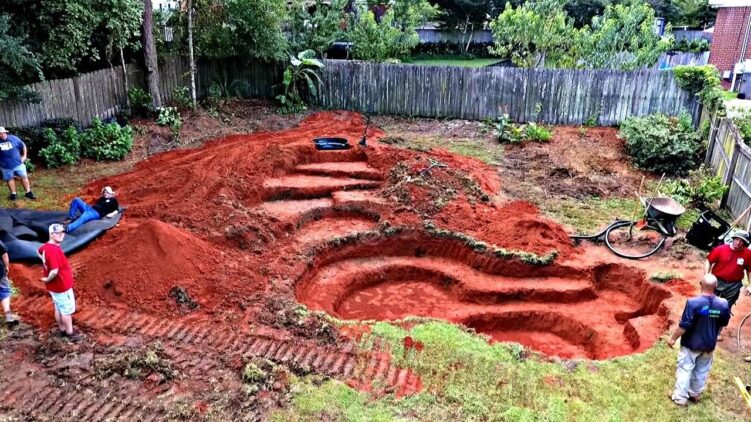Building a pond in your backyard transforms an ordinary outdoor area into a place of peace, beauty, and natural energy.
A well-planned pond becomes an ecosystem filled with aquatic plants, insects, and maybe even fish.
The process requires patience, creativity, and some effort, but the results are worth it.
With a shovel, liner, and a bit of persistence, anyone can create a stunning water feature that brings serenity to daily life.
Proper planning and attention to detail will ensure the pond remains healthy, sustainable, and visually pleasing for years to come.
Planning Your Backyard Pond
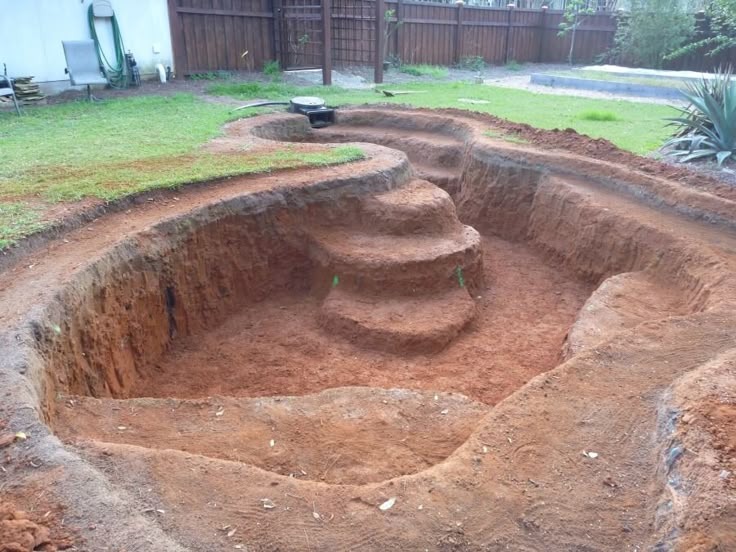
Creating a well-balanced pond starts with clear intentions and thoughtful design.
Defining the purpose early helps guide every step that follows, from the pond’s size to the materials you select.
Some homeowners prefer a tranquil ornamental pond adorned with water lilies and decorative stones, while others aim to attract wildlife such as frogs, dragonflies, and birds.
Before starting construction, choosing the right location is crucial. A pond functions best when exposed to a moderate amount of sunlight, ideally four to six hours per day.
Partial sun encourages plant growth and maintains oxygen levels without promoting excessive algae.
Avoid heavily shaded areas or spots under trees, as falling leaves and branches can quickly pollute the water.
It is also important to inspect for underground cables, pipes, or septic systems before digging, preventing future problems.
- Sunlight exposure: Aim for partial sun with light shade during the hottest part of the day.
- Accessibility: Ensure there is easy access for cleaning, planting, and maintenance.
- Drainage: Choose slightly elevated ground to prevent runoff from entering the pond.
- Proximity to power: If you plan to install a pump, ensure a nearby electrical outlet.
Shape and size greatly affect how the pond complements your backyard design.
Organic curves with soft edges create a natural, flowing look ideal for informal gardens, while geometric shapes like rectangles and ovals bring order to contemporary yards.
Both can work beautifully when balanced with plants and stone edging.
Materials and Tools Checklist
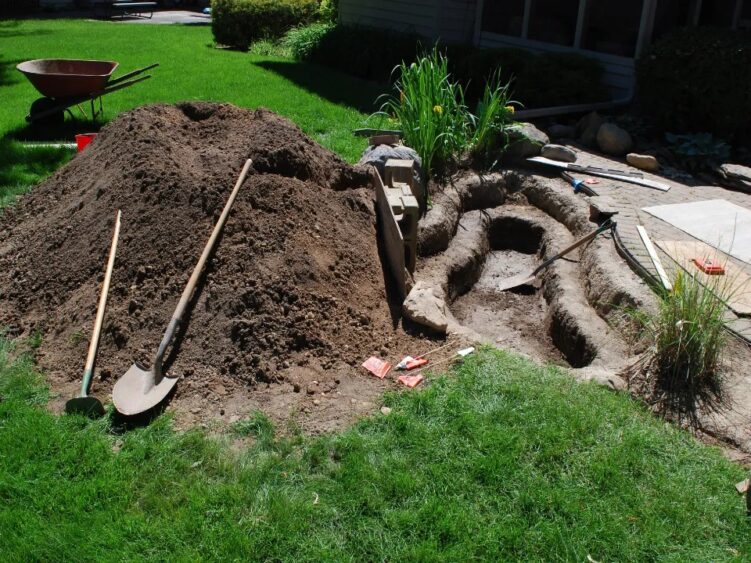
Preparation starts with gathering everything before work begins.
A dependable pond liner such as butyl rubber prevents leaks, while an underlayment made of sand, carpet, or specialized pond fabric protects it from punctures.
Use builder’s sand to cushion the liner and provide a smooth surface.
Add native aquatic plants, natural rocks, and gravel for structure.
Rainwater is ideal for filling the pond, as it lacks chemicals found in tap water.
- Pond liner and underlayment
- Builder’s sand
- Rocks, gravel, and turf for finishing edges
- Native plants suited to water depth
- Rainwater collection system
- Shovel, rake, and wheelbarrow
- Spirit level with a plank for leveling
- Pond skimmer or net
- Scissors or liner cutter
- Mini-digger for large ponds
Admiral JetStream equipment, which is an aqua blower, can be helpful for aeration and maintaining water movement once the pond is complete.
Digging and Shaping the Pond
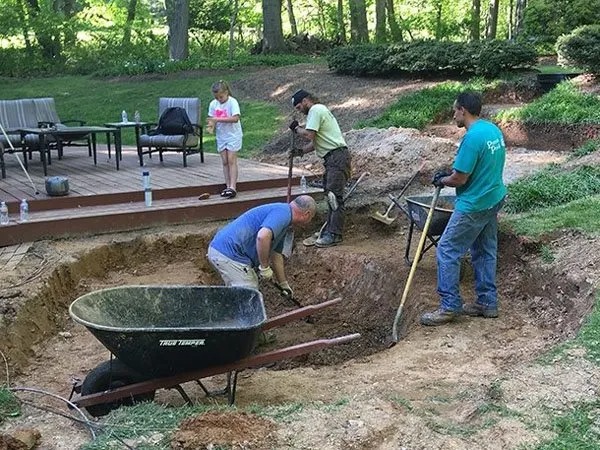
Begin by marking the pond’s perimeter using a garden hose or rope. Adjust until the shape feels balanced within your yard.
Start digging in layers, shaping the base
with gentle slopes and a few shelves for planting zones.
A depth of 45 to 60 cm is enough for small ponds, while larger designs can go up to 90 cm or more for fish.
Before placing the liner, remove sharp stones and roots, then add a 5 cm layer of sand or underlayment. Spread the liner carefully, leaving extra material at the edges for anchoring.
Fill a portion of the pond with water to help settle it, then smooth out wrinkles as it fills.
Proper shaping ensures stability and provides a natural appearance that blends with the surroundings.
Filling and Edging the Pond
Adding water requires patience. Rainwater collected in barrels is best, but if using tap water, let it sit for several days so chlorine can evaporate.
Begin filling slowly to allow the liner to adjust to pressure.
Once the pond is nearly full, secure the liner edges by backfilling with soil or placing stones, gravel, or turf to conceal exposed areas.
For ponds with fish or running water features, installing a pump and filter improves circulation and water quality.
Follow the manufacturer’s instructions to ensure correct installation.
A balanced water flow reduces algae buildup and keeps oxygen levels stable, creating a better environment for aquatic life.
Planting and Landscaping
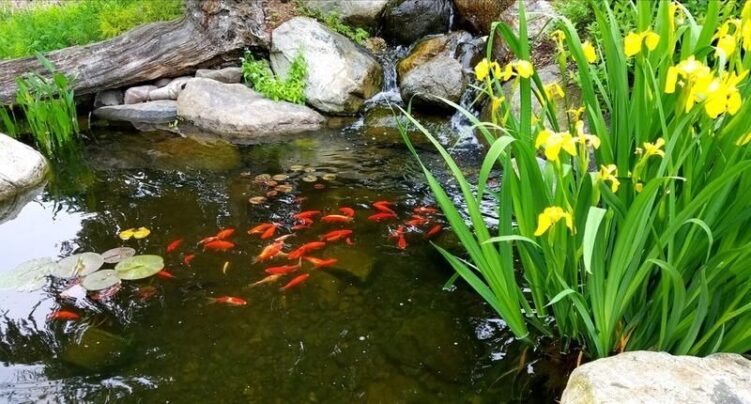
After filling, wait at least a week before adding plants. Water must settle naturally to reach a healthy balance. Divide planting into zones to ensure each species thrives.
- Submerged plants like hornwort provide oxygen and habitat for small creatures.
- Floating plants such as water lilies offer shade and limit algae growth.
- Emergent plants like irises grow partially in water, softening pond edges.
- Marginal plants such as marsh marigolds thrive near shallows and add color.
Surround the pond with native vegetation, rocks, and logs to create shelter for frogs and insects.
A small ramp or gradual slope helps animals access the water safely.
Adding decorative stones or a small waterfall feature enhances movement and sound while supporting a balanced ecosystem.
Introducing Wildlife
Natural colonization often begins within weeks. Insects such as dragonflies and beetles appear first, followed by frogs and birds.
Avoid introducing fish immediately, as they can disturb fragile habitats and reduce biodiversity. If you plan to keep fish, introduce them after 24 to 48 hours once water chemistry stabilizes.
Choose species that suit your pond’s size and temperature, and feed sparingly to avoid pollution.
Allow nature to take the lead and you’ll soon notice a self-sustaining ecosystem forming around your pond.
Maintenance and Eco-Tips
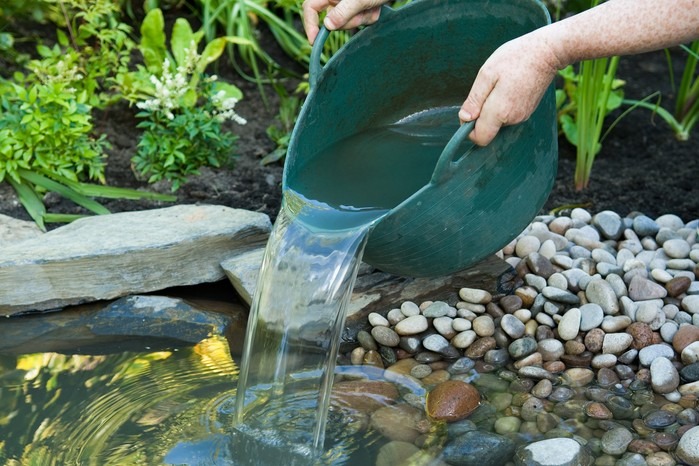
Caring for a pond ensures its long-term success. Regularly remove fallen leaves using a net or skimmer, and check filters and pumps for blockages. Test pH and ammonia levels if fish are present. Refill evaporated water using rainwater to maintain consistency.
Seasonal attention keeps everything balanced:
- Spring: Remove sludge, trim old growth, and replant as needed.
- Summer: Control algae by managing sunlight exposure and nutrient levels.
- Fall: Skim debris and prepare for colder months.
- Winter: Keep a small breathing hole in ice using an aerator or floating heater.
Eco-friendly methods matter. Avoid chemicals that harm wildlife, use native plants, and let biological filters do most of the cleaning.
Collecting rainwater also reduces environmental strain and keeps your pond naturally balanced.
Summary
A backyard pond connects people to the rhythms of nature and adds harmony to any outdoor space.
Careful planning, proper materials, and patience are key to building a water feature that endures.
Each step, from digging to landscaping, contributes to a living ecosystem that attracts life and promotes relaxation.

